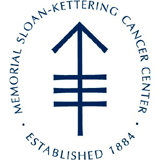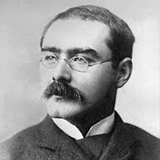Classical reprint
Cancer
Editor's note
There are some very well-known yet hidden facets about cancer that this article reveals. Written in a satirical style it shows a totally new way to approach this often dreaded disease.
August Bier, a German surgeon, declared in the earlier part of the twentieth century that everything the experts knew about cancer could be put down on a visiting card: we know nothing.
Caraka, the Indian Āyurvedic legend, predating Christ by half a millennium, classified tumours as benign and malignant. Caraka warned physicians against meddling with a malignant lesion, for it often rendered the patient worse than before. Ernest J. Borges, an outstanding surgeon at Mumbai’s Tata Memorial Centre, comprising the Cancer Research Institute and the Tata Memorial (Cancer) Hospital, declared at a public meeting in 1966, a few months before his death from cancer, that many of his patients had complained to him about the treatment being worse than the disease. Macfarlane Burnett, the Australian immunologist of wide renown, summed up in the 1970’s the outcome of all cancer research in just two words: precisely nil.
James Watson, of The Double Helix fame, characterised cancer research as scientifically bankrupt, therapeutically ineffective and wasteful. Despite the continuing global animal slaughter on an astronomical scale and the fiscal Niagara down the laboratory drain, there is no reason to change mankind’s krebsanschauung, or cancer-view. The eminent chemist, Linus Pauling, who espoused the virtues of mega-doses of vitamin C as a preventive against the common cold and cancer and who succumbed to cancer himself, had openly stated that the war on cancer is largely a fraud, and that The National Cancer Institute and The American Cancer Society have been derelict in their duties towards the unsuspecting public.
One of us had a chance to spend over two hours with the then director of the New York-based Sloan-Kettering Institute, Lewis Thomas, in October 1977. Thomas confessed that oncologists were politically so committed to the cure of cancer that they didn’t have the courage to be candid. Joseph Hixson’s The Patchwork Mouse (1976) is the biography of the greatest scientific scandal of the century, perpetrated at the Sloan-Kettering Institute and provides a brilliant diagnosis of the ills that plague the cancer establishment.
Cancer — far more benign than malignant mankind — is what it is, and does what it does, because of unalterable, unabrogable biorealities that attend this fascinating phenomenon. Alexander Solzhenitsyn, author of Cancer Ward and, through that, an authority on cancer more trustworthy than most oncologists lumped together, indicated in his Nobel address that a grain of truth can outweigh the whole world. Cancerrealism, comprising truths about cancer, provides to the open-minded lay and the close-minded learned a perspective that allows one to live with cancer, and die with it. Let the paranoia of humans be assuaged by a declaration at the very outset: the last thing a cancer in your body wants to do, or does, is to kill you. Rather, it chooses to go down the grave with you. Towards such a krebsanschauung, it is useful to fall back on the six teachers listed by Rudyard Kipling: what, why, who, where, when and how.
What
Life was, expectedly, preceded by ‘pre-life’ which originated in the ancient seas or primaeval broth. Clyde J. Dawe has suggested that a cancerous ‘neoplastic’ equivalent may have been the first form of pre-life endowed with infinite capacity to proliferate. Life evolved from cancer. Talking in the language of Charles Darwin and the German biologist August Friedrich Weismann, every life-form bears the indelible stamp of its lowly origin from cancerous pre-life. Not surprisingly then, canceration is a universal prerogative of normal diploid dividing cells.
“In a disconcerting way, the development of neoplastic cell populations in contemporary metazoans resembles not only a reversal of evolutionary processes—but also a recapitulation of them” (Dawe 1969).
From cancer thou art, to cancer mayst thou return.
Chemotherapy and radiotherapy, both sworn enemies of cells ‘normal’ and ‘abnormal’, have been deployed against cancer through a professionally propagated paranoia that the ‘savage’ cancer cells are multiplying too rapidly and, therefore, fall prey to the therapy too readily. Alas, this idée fixe has no support whatsoever from the world of cytology: cancer cells multiply so tardily that before chemo-or radiotherapy may kill one cancer cell, it will surely destroy thousands of normal cells in the bowel and bone marrow. The other obsession, that therapy targets the abnormality inherent in a cancer cell, is nailed by the fact that a cancer cell is considered but a variant of the normal cell. Or to deploy the vocabulary of Norman MacLean, author of The Differentiation of Cells (1977), the cancer cell is the most stable, most committed, differentiated cell. The ugliness of a cancer cell truly lies in the eyes of the beholding cancerologist.
Why
Cancer is causeless, ‘whyless’. Way back in 1918, Bertrand Russell exiled causalism from science on scientific grounds. It persists in modern medicine, for it is but an art wearing the garb of science. If the much maligned Lady Nicotine is blamed for causing cancer, then statistics, read between the lines, reveal that those who smoke have a lower incidence of bowel cancer, brain cancer, Alzheimer’s and Parkinsonism. Alex Comfort, the guru of gerontology-et-sexology, has caricatured medicos as ‘anxiety makers’ in a book by the same name, where he ends up admiring the astounding resilience with which the common man bites the very apple that his doctor has denied, no matter what cancer the apple threatens to cause.
That one’s cancer is pre-programmed prior to one’s birth and stays noumenally programmed after one’s death is inferrable from the unfailing uniqueness that every cancer exhibits. No two cancers have ever been alike, for when present in anybody, a cancer must converse with all the cancers of the past, the present and the entire future so as to obey the TITE principle — ‘Total Inclusion allows Total Exclusion’ — and thus to fashion its own uniqueness. The uniqueness of my fingerprint or DNA-print is a phenomenal outcome of its noumenal oneness with the entire cosmos, past, present and future. So it is for cancer. The very uniqueness of every cancer rules out the possibility of a specific drug or a vaccine.
Who
All are called, but a few (one out of five) are chosen. The benevolence of cancer is evident from the fact that cancer occurs everywhere on earth, but in excess nowhere. Oncogenes, now granted a normal, universal status by the researchers, are present in all, but by a herd order, cross the cancerogenic threshold in a predictably fixed number to spawn the phenomenon. The saving grace is that the one who bears the cancerous cross is no more likely to die than the one who has been spared. Hardin Jones (1956), of The National Cancer Institute, from a global survey of cancer treated and untreated, concluded that cancer per se is not the cause of death, and that at an average the untreated outlive the treated.
Where
Cancer is universal — among all species in the plant and animal kingdoms, in all human races, and, in the body, from the scalp to sole. C.P. Leblond of Canada classified the body cells into perennial or immortal, expanding and renewing groups. The perennial cells are the sensory receptors, nerve cells and muscle cells. They can’t divide normally, and hence can’t divide cancerously. They are free from cancer. The expanding cells divide only on demand, and hence the occurrence of cancer therein is low. The renewing cell populations divide ceaselessly and are the seat of the majority of cancers.
When
Cancer occurs throughout the human life-span. It can occur in the newborn, and at all ages, but, in both animals and man, it closely parallels the mortality curve natural to the species.
The nature of the whenness of cancer exposes the greatest lie that cancerologists have been mouthing to date, namely the idea of early diagnosis and treatment. Following its inception, even the most rapidly growing cancer takes a quinquennium before it reaches a scannable stage, and yet more time before it diseases the owner. By the time a cancer is diagnosed, no matter how and by whom, it has had enough time and opportunity to settle itself as a cellular reality pervading the entire body. The few cancers — notably, primary tumours of the brain — that do not spread to other sites, nevertheless, observe their ‘discreet silence’ and undiagnosability for quite a while. On the medical claims about the early diagnosis and treatment of cancer, one could invoke Churchillian rhetoric: ‘Never in the history of science has so much untruth been told by so few to so many for so long’.
How
From the last of the Kipling teachers, we shall learn how to deal with one’s own cancerophobia and with one’s own cancer when it is a fait accompli. All the available data on cancer allow a robust approach to the problem, no matter what age, and what the cancer, as follows:
1. Cancer cannot be caused, cannot be prevented. Therefore, adopt a que sera sera attitude about its affecting you.
2. Remember that cancer has been with mankind for ages and its occurrence is neither a freak of nor a punishment from nature. Every cancer is a part of your own being. If you must not love it, you need not hate it either.
3. Each cancer, before it bothers you or your doctor, has been with you for a long time. Early diagnosis/treatment for a cancer is a myth to be buried.
4. For the reasons cited above, it is not at all necessary for you to get yourself screened for cancer. Bother yourself about cancer when, and only when, it really bothers you.
5. Cancer does not always kill, nor does it always connote a short post-diagnosis or post-treatment life. Decide to live with your cancer until it chooses to die with you.
6. Appreciate the fact that cancer need not necessarily disrupt either your profession or your joie de vivre.
7. Since there is nothing like a cure for cancer, insist on being treated symptom-far and no further. Any form or therapeutic radicalism is a despicable overkill by medicine.
8. If you must be treated, seek surgery; should you be irradiated or given chemotherapy, insist on the minimal and be prepared for the cellular levy that your body must pay from head to foot as a consequence.
9. You owe a duty to your body and soul in the form of a dignified death. Do not deny yourself the experience of dying with dignity.
10. Cancer is a species, class or ordinal character. You can neither inherit it nor pass it on to your progeny.
Further reading
1. Burnett, MacFarlane. Immunological Surveillance. Oxford; Pergamon, 1970 (see chapter on cancer cells).
2. Dawe, Clyde P. Phylogeny and oncogeny. National Cancer Institute Monograph, 1969; 31:1.
3. Hixson, Joseph. The Patchwork Mouse: Politics and Intrigue in the Campaign to Conquer Cancer. Anchor Press, 1976.
4. Jones, Hardin B. Demographic considerations of the cancer problem. Trans. N. Y. Acad. Sc. 1956; 48:298.
5. Kothari, M.L., Lopa A. Mehta. Cancer: Myths and Realities of Cause and Cure. London; Marien Boyers., 1979.
Source: (ed.) Lal, V., Nandy, A. The Future of Knowledge and Culture, A Dictionary for the 21st Century. New York; Penguin Viking, 2005, pp.25-30.
Dr. Manu Kothari and Dr. Lopa Mehta were teachers of medicine in Mumbai.
Share with us (Comments, contributions, opinions)
When reproducing this feature, please credit NAMAH, and give the byline. Please send us cuttings.







